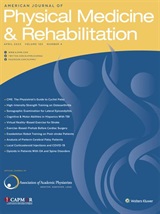Andrews, professor of physical therapy education, co-authored a study of patients with Guillain-Barre Syndrome undergoing inpatient rehabilitation.
Bill Andrews, professor in the Department of Physical Therapy Education, along with Richard Bohannon, professor emeritus at the University of Connecticut, have been notified their research study, “Improvements and Residual Limitations Experienced by Patients with Guillain-Barre Syndrome Undergoing Inpatient Rehabilitation,” has been published ahead of print in American Journal of Physical Medicine and Rehabilitation (Impact Factor = 3.41; top quartile of rehabilitation journals).
The authors analyzed a nationwide database from the Uniform Data System for Medical Rehabilitation. Elon’s Faculty Research and Development Fund provided funding to support access to this database.
Andrews and Bohannon assessed data from almost 2,000 individuals who were patients in inpatient rehabilitation facilities following the onset of Guillain-Barre Syndrome, a disease of the peripheral nervous system. They found that: 1) patients with Guillain-Barre admitted to inpatient rehabilitation require assistance with at least one if not several domains of function, motor as well as cognitive, 2) by the end of the inpatient rehabilitation stay, for each domain of function, significantly more patients attain independence, and 3) by discharge, fewer patients are independent in certain motor domains, particularly locomotion, than in others.
In other words, patients admitted to inpatient rehabilitation following the onset of Guillain-Barre need and benefit from the services provided by physical therapists and other rehabilitation professionals. However, by discharge, some of these patients still require assistance with some aspects of mobility, especially walking and climbing stairs. Therefore, some patients may benefit from continued therapy on an outpatient basis after they return home.



